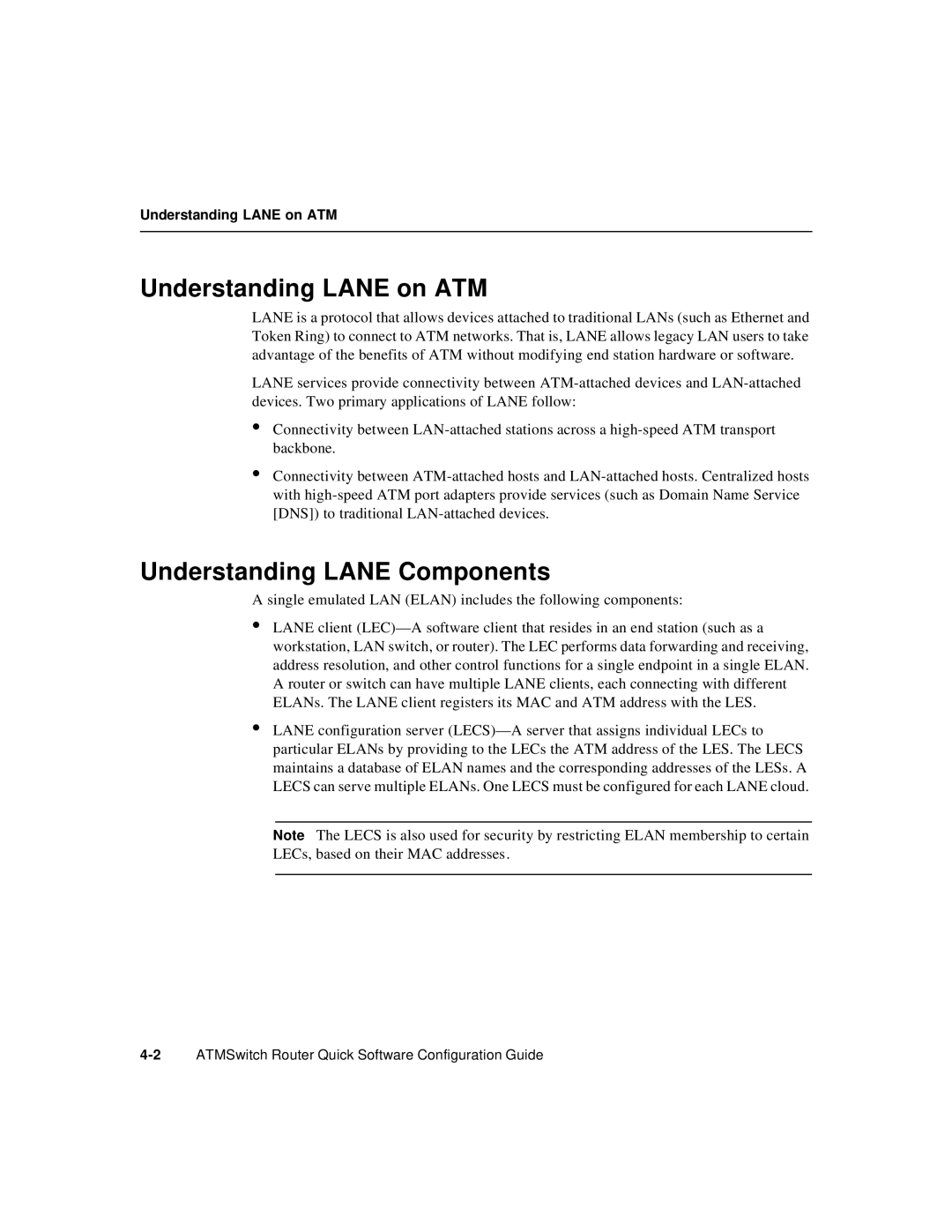
Understanding LANE on ATM
Understanding LANE on ATM
LANE is a protocol that allows devices attached to traditional LANs (such as Ethernet and Token Ring) to connect to ATM networks. That is, LANE allows legacy LAN users to take advantage of the benefits of ATM without modifying end station hardware or software.
LANE services provide connectivity between
•Connectivity between
•Connectivity between
Understanding LANE Components
A single emulated LAN (ELAN) includes the following components:
•LANE client
•LANE configuration server
Note The LECS is also used for security by restricting ELAN membership to certain LECs, based on their MAC addresses.
